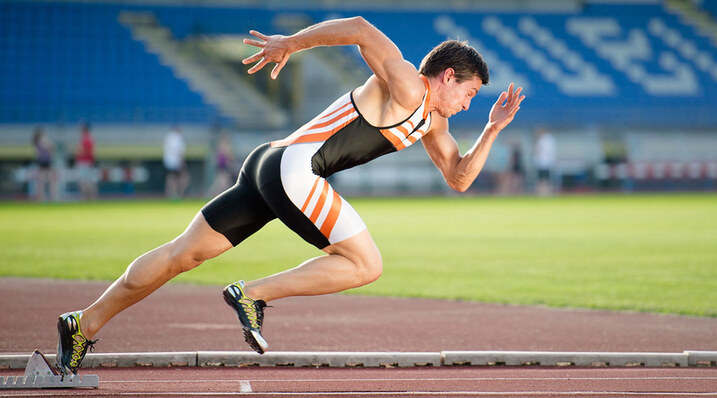The Age of Peak Performance: According to a Recent Study
In the ever-evolving world of Olympic sports, the quest for peak performance drives athletes to continually push their physical and mental limits. A recent study has provided groundbreaking insights into the age at which Olympic athletes typically reach their peak performance, challenging existing assumptions and offering new perspectives on training and competition strategies. This comprehensive examination of athlete performance across various sports not only highlights the diversity in peak performance age but also underscores the importance of tailored training approaches.
Overview of the Study
The recent study, conducted by a team of leading sports scientists and researchers, sought to analyze performance data from Olympic athletes across a wide range of sports disciplines. By scrutinizing metrics such as competition results, training regimens, and physiological benchmarks, the researchers aimed to uncover patterns related to age and peak performance. The study included data from athletes competing in multiple Olympic Games and spanned several decades, offering a robust dataset for analysis.
Key Findings
1. Diverse Peaks Across Sports
One of the most notable findings of the study is the significant variation in peak performance age across different sports. This diversity underscores the fact that there is no one-size-fits-all approach to athletic peak performance.
- Endurance Sports: Athletes in endurance sports such as marathon running, cycling, and long-distance swimming often reach their peak performance in their late 20s to early 30s. The extended peak age in these disciplines can be attributed to the cumulative effects of training, experience, and the body’s ability to endure sustained physical exertion over time. For instance, marathon runners often experience improved performance as they accumulate more miles and refine their pacing strategies over the years.
- Power and Speed Sports: In contrast, sports that require explosive power and speed, such as sprinting, gymnastics, and weightlifting, generally see peak performances in the early to mid-20s. These sports demand peak physical conditioning and rapid recovery, which are more commonly associated with younger athletes. For example, sprinters like Usain Bolt have demonstrated that their best times often occur in their early 20s, when their speed and power are at their zenith.
- Technical Sports: Sports that rely heavily on technique and strategy, such as fencing and shooting, tend to see peak performances later. Athletes in these disciplines may continue to improve well into their 30s due to their refined skills and strategic understanding. For example, in shooting sports, precision and mental acuity can improve with age, leading to peak performances in the later stages of an athlete’s career.
2. Early Specialization vs. Diverse Training
The study also explored the impact of early specialization versus a more diversified approach to training on an athlete’s peak performance age.
- Early Specialization: Athletes who specialize in a single sport from a young age often experience earlier peaks. This early focus can lead to rapid skill development and competitive success in the short term. However, it can also lead to burnout or overuse injuries, which may shorten the athlete’s career. For example, young gymnasts often achieve their highest level of performance in their teens but may face challenges maintaining that level as they age due to the physical demands of the sport.
- Diverse Training: Athletes who engage in multiple sports or incorporate varied training methods often experience longer careers and later peaks. This diversified approach allows athletes to develop a broader range of skills and reduces the risk of overuse injuries. For instance, multi-sport athletes like decathletes or triathletes benefit from a varied training regimen that supports their overall athleticism and can lead to peak performances later in their careers.
3. The Role of Experience
Experience is a crucial factor in determining peak performance age. Athletes who have competed in multiple Olympic Games or have extensive international experience often reach their peak performance later in their careers.
- Strategic Acumen: In sports where strategy plays a significant role, such as sailing or archery, athletes benefit from their accumulated knowledge and tactical understanding. This experience allows them to make better decisions during competition, which can lead to peak performances at an older age.
- Mental Resilience: The mental fortitude developed through years of competition also contributes to later peak performances. Experienced athletes are often better equipped to handle the pressures of high-stakes competition and can maintain their focus and composure, enhancing their performance as they age.
4. Physiological Factors
The physiological changes that occur with age also play a significant role in determining when athletes reach their peak performance.
- Younger Athletes: Younger athletes typically benefit from faster recovery times and greater raw physical power. This can be advantageous in sports that require explosive bursts of energy and rapid recovery between efforts. For instance, the ability of a young sprinter to recover quickly between sprints is a key factor in their peak performance.
- Older Athletes: As athletes age, they may experience declines in certain physical attributes such as speed and recovery rate. However, older athletes often compensate with improved technique, strategy, and mental toughness. Tailoring training programs to address age-related changes, such as focusing on maintaining flexibility and strength, can help older athletes continue to perform at a high level. For example, older swimmers may emphasize technique refinement and race strategy to compensate for any physical declines.
Implications for Training and Coaching
The insights from this study have several important implications for training and coaching practices across various sports:
1. Age-Specific Training Strategies
Coaches and trainers may need to adapt their strategies based on the age and type of sport.
- Endurance Sports: For endurance athletes, training programs should focus on maintaining stamina, preventing injuries, and optimizing recovery. Long-term planning that incorporates gradual increases in training intensity and volume can help athletes achieve peak performance in their late 20s or early 30s.
- Power Sports: In sports that require explosive power, training should emphasize maintaining strength and speed while incorporating injury prevention strategies. Young athletes may benefit from intense, short-term training cycles, while older athletes might focus on sustaining their physical capabilities through targeted conditioning and recovery techniques.
2. Long-Term Athletic Development
Developing long-term plans that account for the athlete’s peak age can enhance performance outcomes.
- Early Career: In the early stages of an athlete’s career, the focus should be on building foundational skills and physical conditioning. As athletes progress, their training should evolve to address specific performance goals and prepare for peak performance.
- Mid to Late Career: For athletes approaching their peak age, training programs should emphasize maintenance of performance levels, injury prevention, and strategic refinement. Personalized approaches that cater to the athlete’s strengths and weaknesses can help them sustain peak performance throughout their careers.
3. Support Systems
Providing comprehensive support systems is essential for athletes to achieve and maintain peak performance.
- Nutrition: Proper nutrition is crucial for optimizing performance and recovery at any age. Tailoring dietary plans to the athlete’s specific needs can enhance energy levels, improve recovery, and support overall health.
- Mental Health: Mental resilience and psychological support play a significant role in an athlete’s performance. Providing access to mental health resources, such as sports psychologists and stress management techniques, can help athletes navigate the pressures of competition and maintain peak performance.
- Recovery: Effective recovery strategies, including rest, rehabilitation, and injury prevention, are vital for sustaining peak performance. Implementing recovery protocols that address the athlete’s age-related needs can enhance performance and extend their competitive career.
The recent study offers a comprehensive view of how age influences Olympic athletes’ peak performance. By understanding the diverse age-related patterns across different sports, athletes, coaches, and sports scientists can better tailor training and preparation strategies. The findings challenge conventional wisdom and highlight the importance of personalized approaches to training, considering both the physiological and psychological aspects of athletic performance.
As the landscape of sports continues to evolve, these insights will help shape the future of Olympic competition and advance our understanding of human athletic potential. For athletes at any stage of their careers, the key takeaway is that peak performance is not solely determined by age but by a complex interplay of experience, training, and physiological factors. With the right approach and support, athletes can achieve and sustain their peak performance, regardless of their age.




